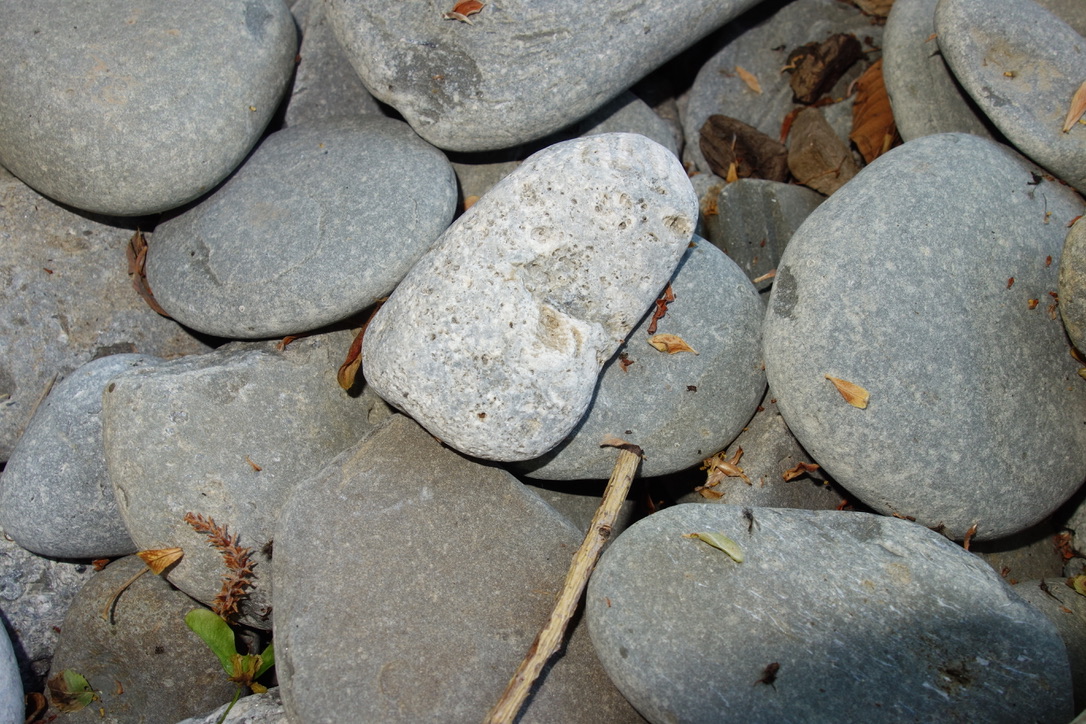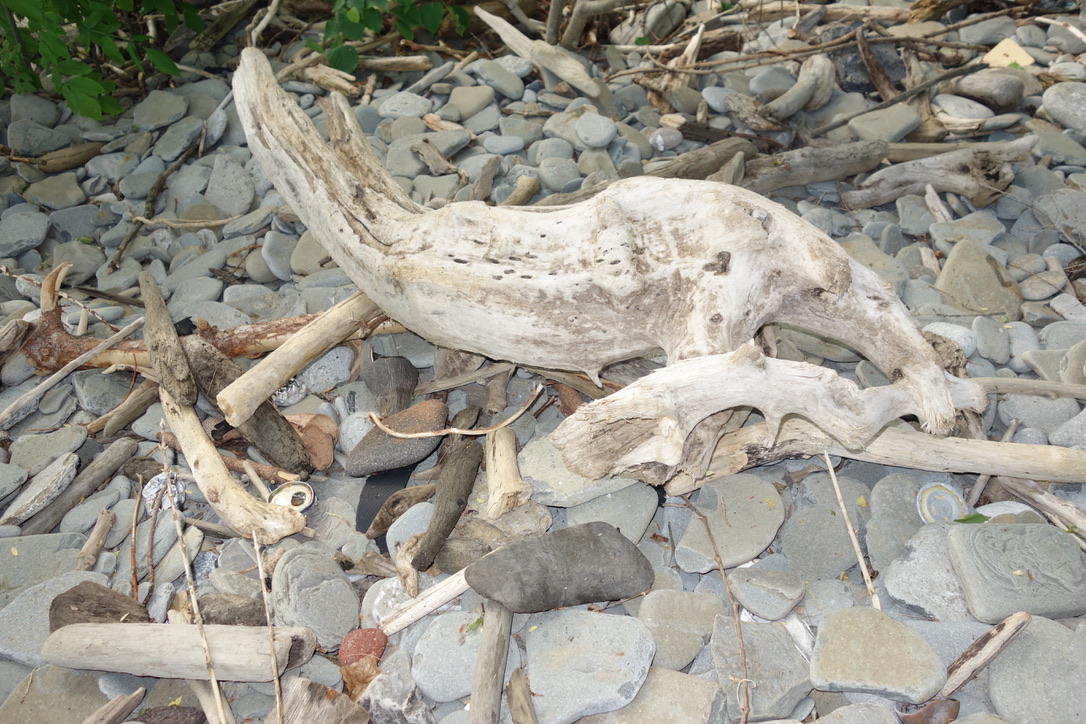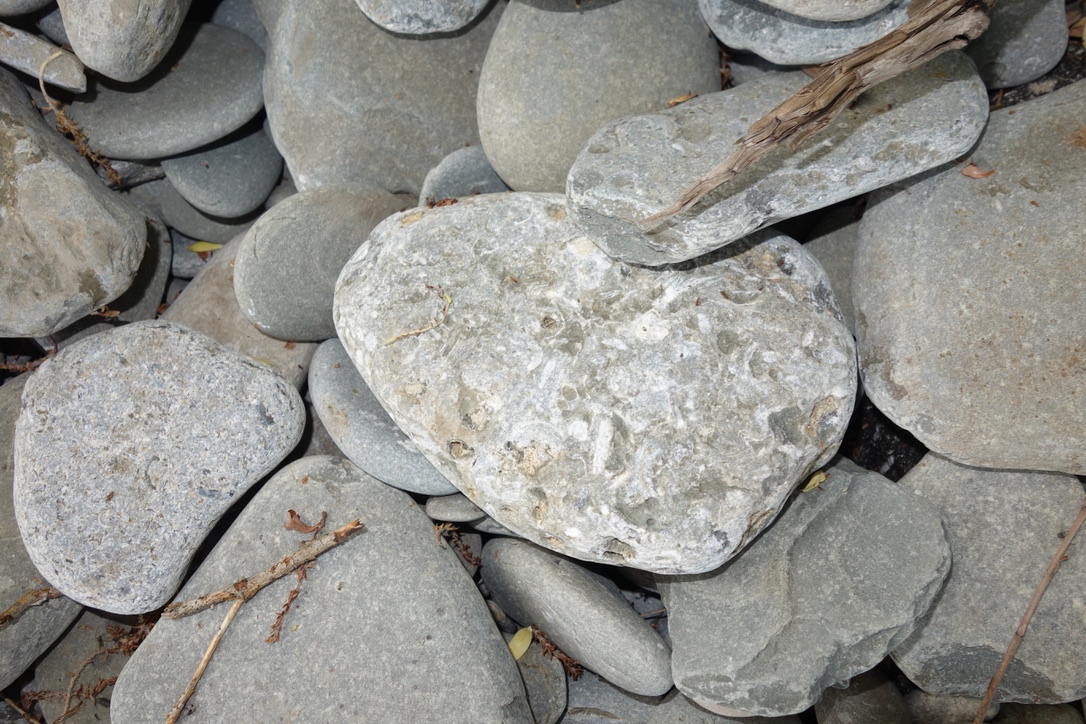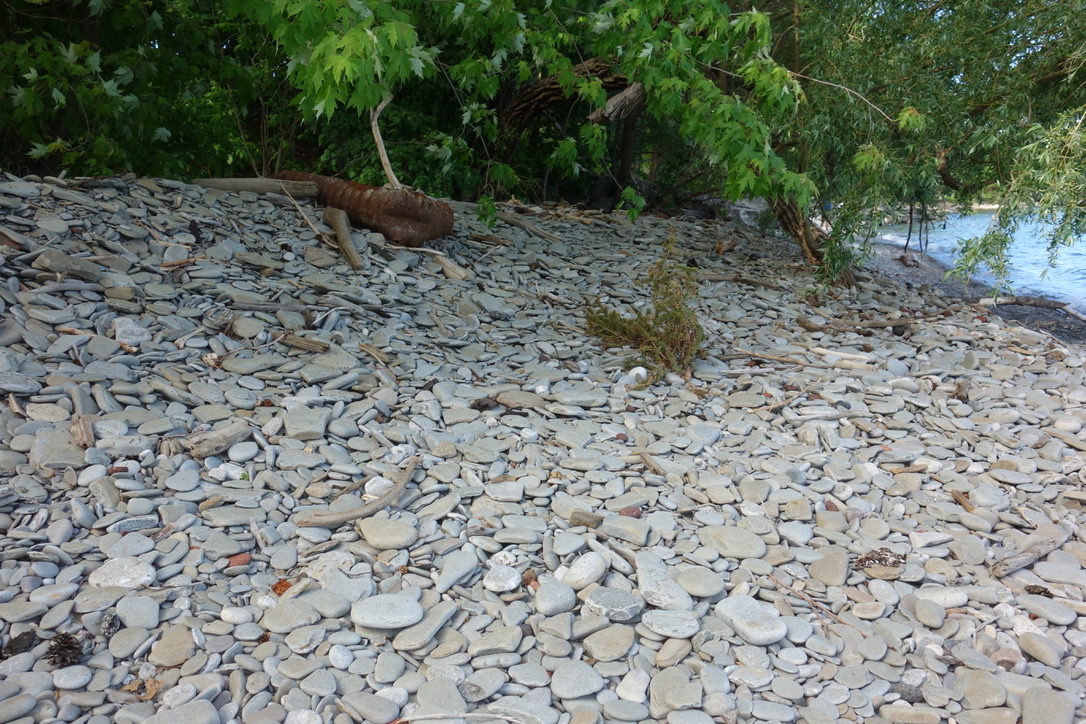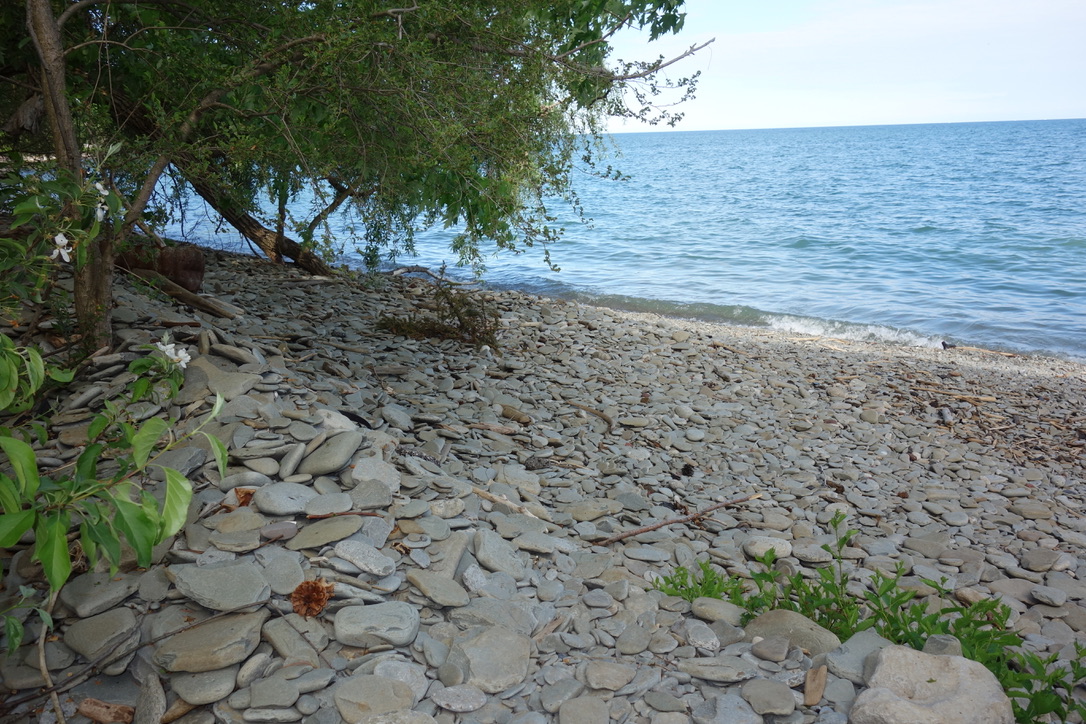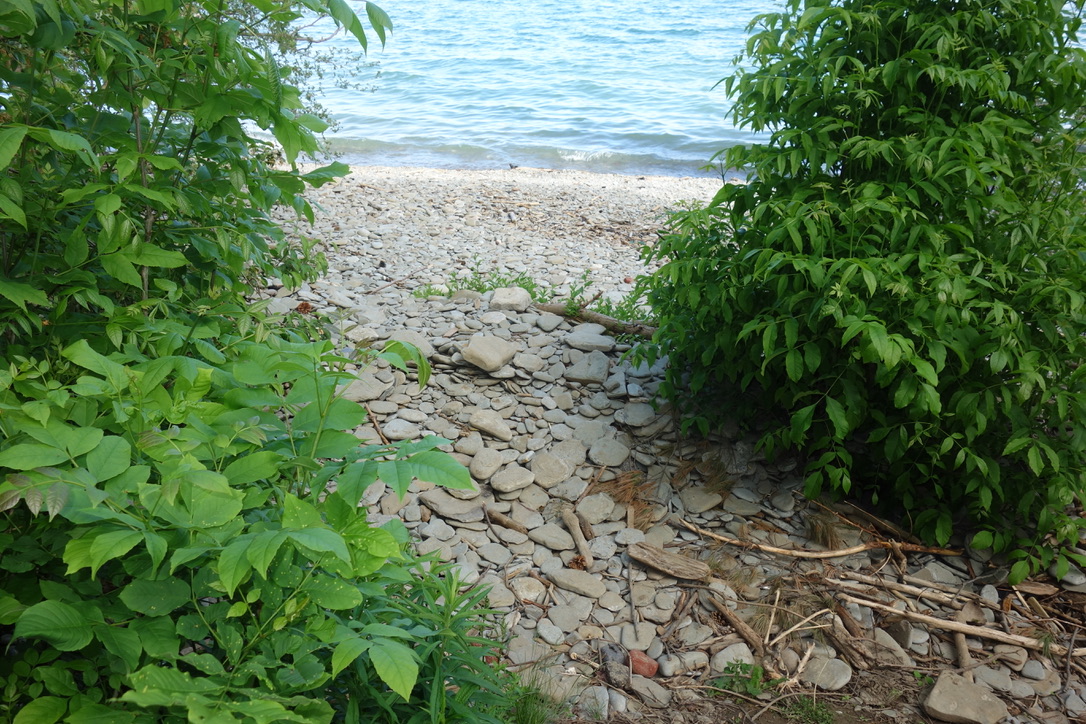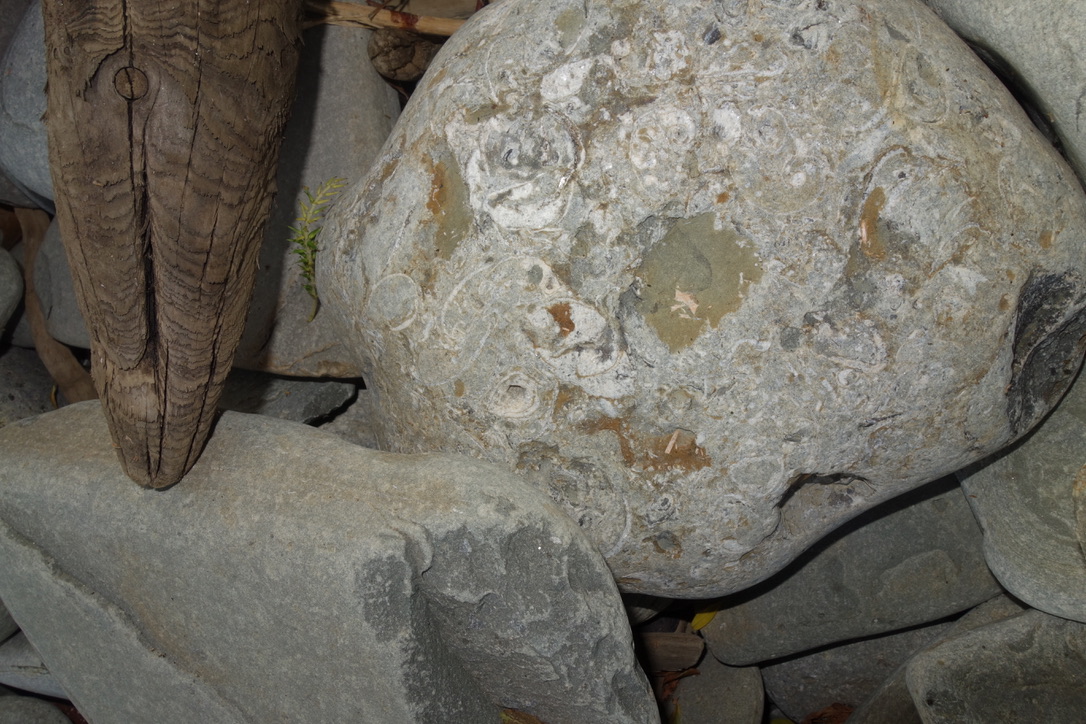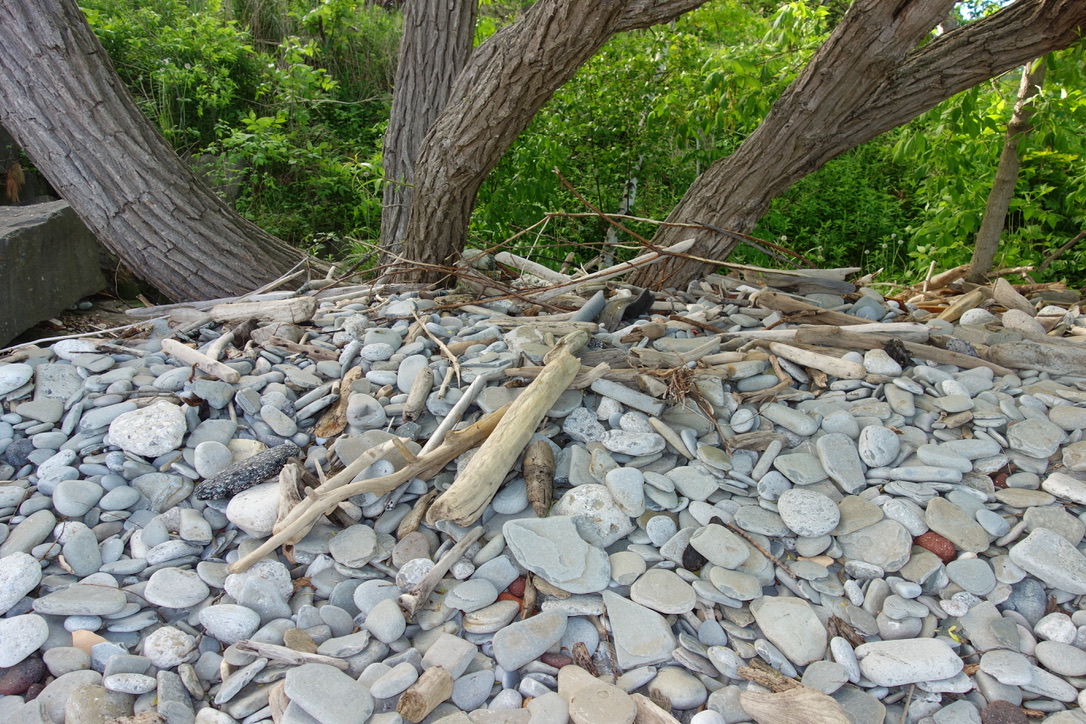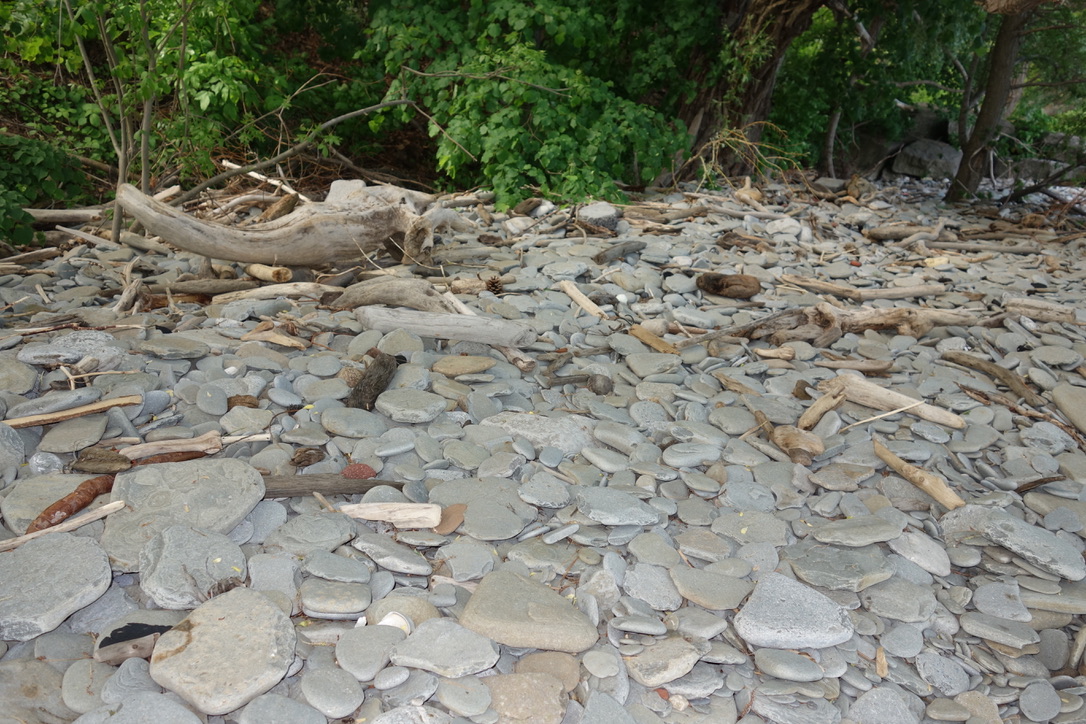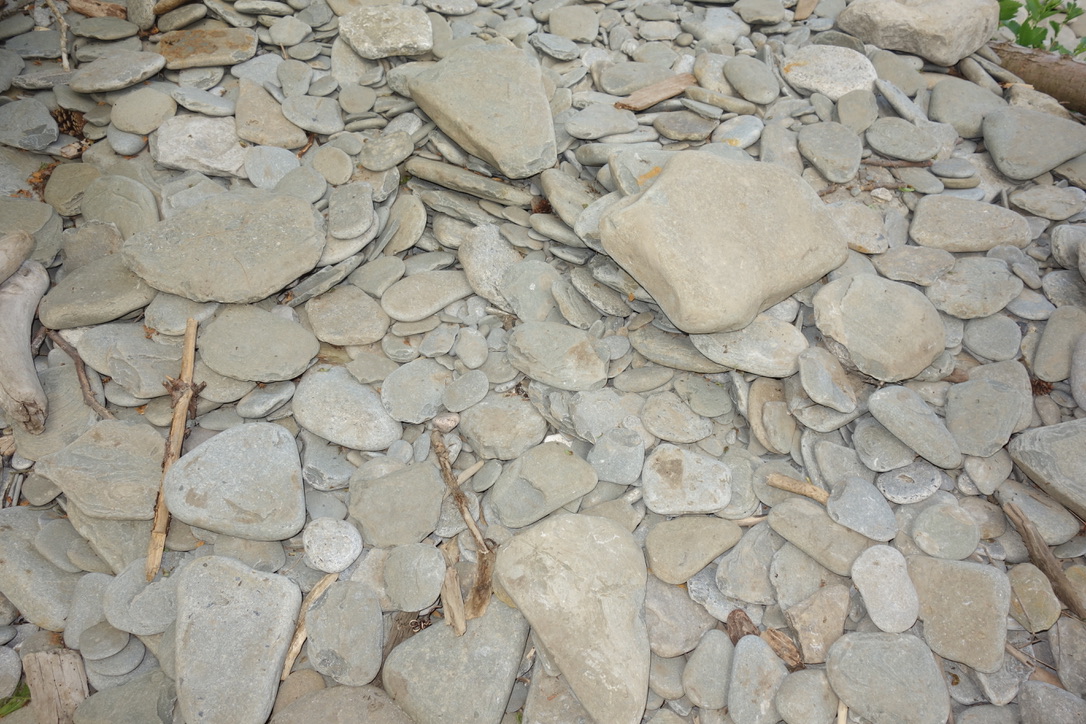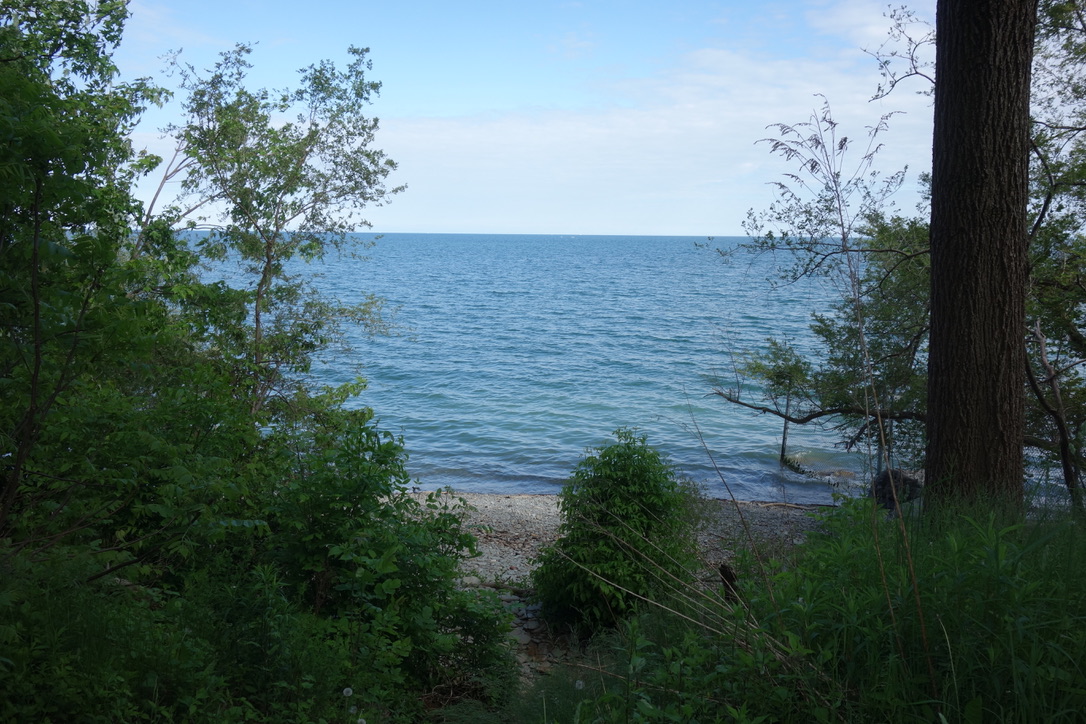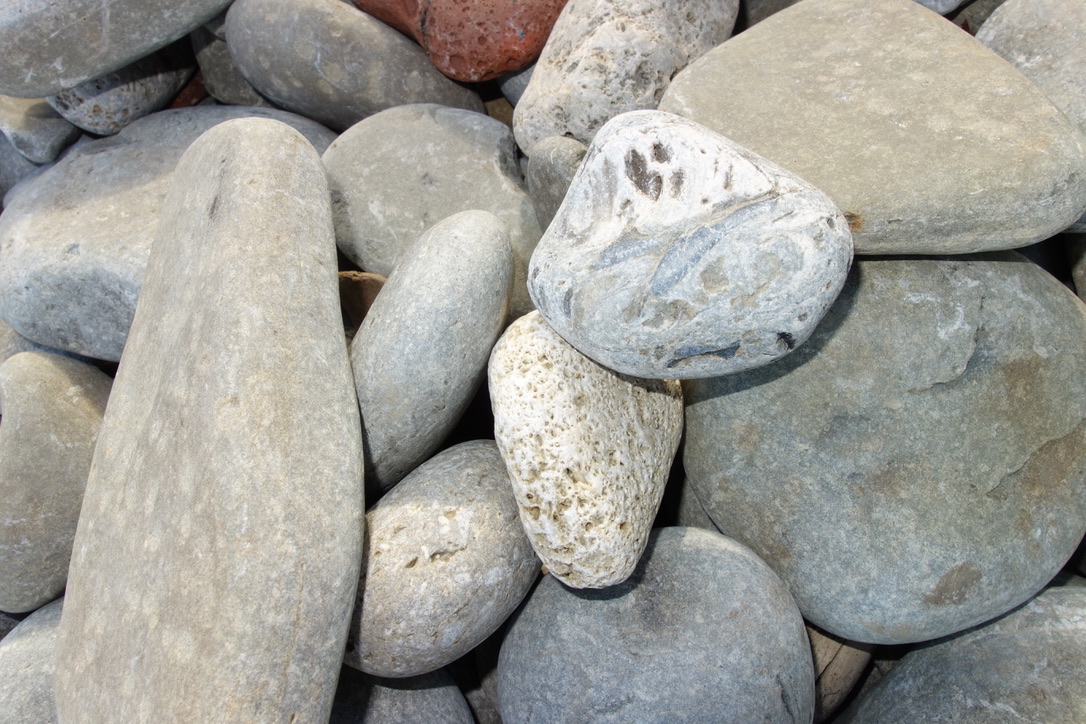FOSSILS ON A SHINGLE BEACH “AND A MILLION LOST GOLF BALLS”

Strange how fragments of poetry get locked and hidden in the human brain…and then suddenly emerge when triggered by a fringe event. So it is with this tiny quote from T. S. Eliot.
“And the wind shall say: ‘Here were decent Godless people:
Their only monument the asphalt road
And a thousand lost golf balls.”
Shingle beaches are harder and harder to find these days as landscapers, encouraged by City officials, deposit huge blocks of limestone or, worse,
lumps of concrete, on spots where water meets land. They fear erosion.
As do we all. But something’s lost for something gained as has been said.
So what is a shingle beach, you ask? Some writers describe a shingle beach
as a landform ‘armoured’ with flat cobbles made smooth by tumbling
wave actions. In short they are not sandy and therefore not generally
desirable by barefoot strollers.
They are rare, however, and should be treasured for among these wave worn cobbles are signatures of past life. The most recent signature for Marjorie and me is this orange golf ball (hence T. S. Eliot fragment) found alongside
something far more meaningful (hence T. S. Eliot’s metaphor).
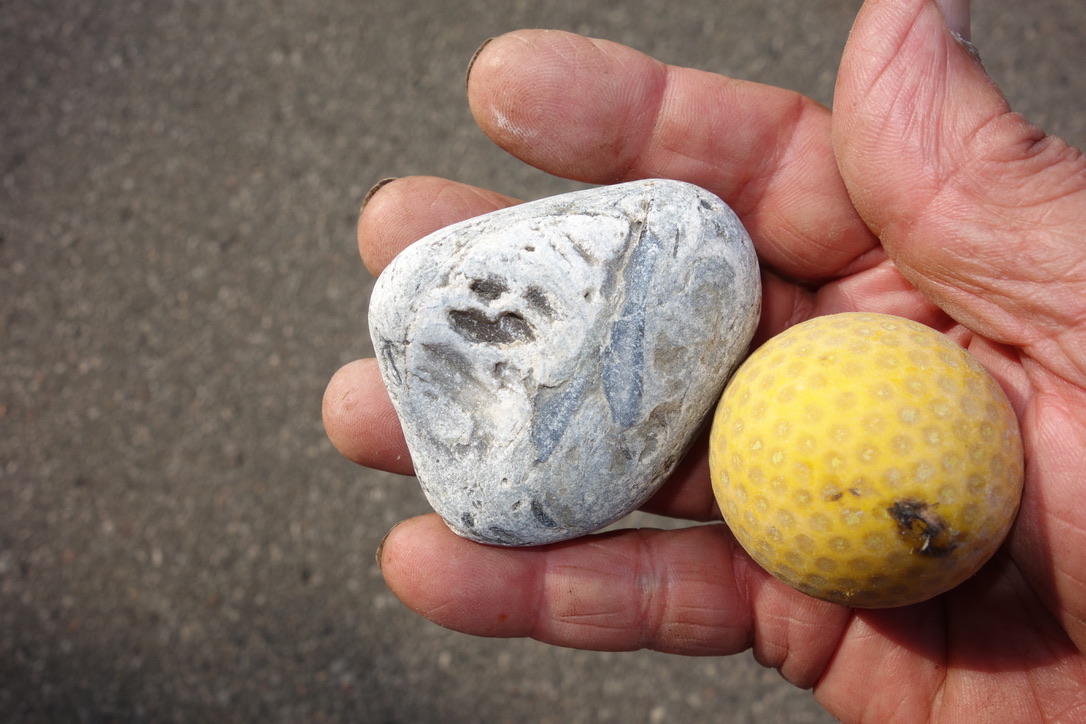
This piece of Port Credit shale was once a muddy slurry at the bottom of an ancient ocean that once covered much of North America. That ocean abounded with life in Paleozoic times. Proof is not hard to find on shingle
beaches for many of the cobble chunks are richly fossilized with nautiloids and crinoids and trilobites. Weird creatures that lived here so deep in the past as to be unimaginable.
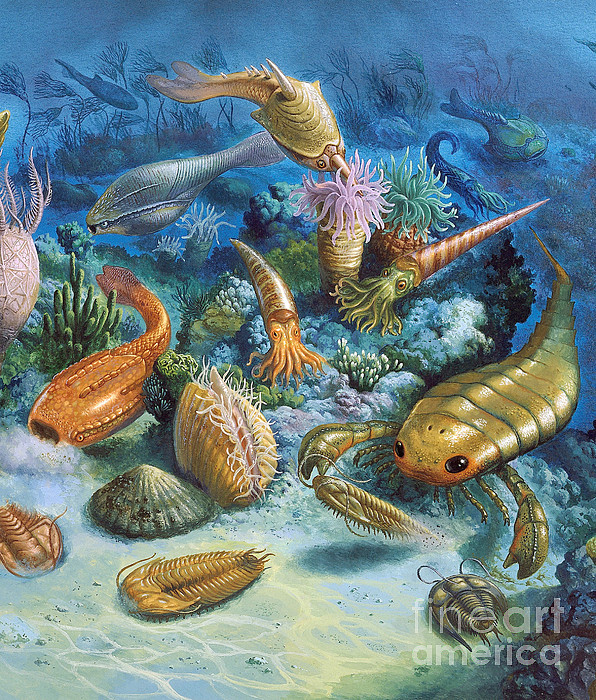
So what animal’s remains have I found on this shingle beach. I think the fossil beside the golf ball was once a nautiloid…that long cylindrical creature
that looks like an ice cream cone. Then again it could well be a fossilized
crooned stem. But there are dozens of other fossils
on this shingle beach. And most of them can be identified as creatures of
the Paleozoic Era spanning almost 200 million years from 542 million years ago to 251 million years ago. Seems that the trilobite (image at bottom of picture) was the most common with 17,000 variations.
I have never found a trilobite on a shingle beach even though I have been
looking off and on for most of my life. But I have found lots of nautiloid
and crinoid
fossils.
What happened to these creatures? Wow! You will be sorry you have asked.
some 251 million years ago the greatest mass extinction in world history
happened dooming the rich sea life of the Paleozoic Era. What happened?
The most agreed upon explanation is that an asteroid hit the earth near
Australia. Sudden. Killing 97% of life forms in the oceans and over 70% of
life forms on land. Following the impact was millions of years of climate
change.
But no one really knows what actually happened. Except for the fact that
this biggest extinction event in the history of life of earth did happen.
Other extinction events happened later such as the event 65 million years
ago that killed the dinosaurs.
There are no dinosaur fossilized bones on our shingle beaches. But plenty
of other fossils. There were not dinosaurs on earth when these creatures
thrived. A sharp observer can divide them up into separate
periods.
- Cambrian: 542 to 488.3 million years ago
- Ordovician: 488.3 to 443.7 million years ago
- Silurian: 443.7 to 416 million years ago
- Devonian: 416 to 359.2 million years ago
- Carboniferous: 359.2 to 299 million years ago
- Permian: 299 to 251 million years ago
Alan Skeoch
June 3, 2018
Take a look at the diversity of objects on this shingle beach…some new, some old, some ancient, some mysterious, some sobering. All soaring really as is T. S. Eliot’s comment about a million lost golf balls.

